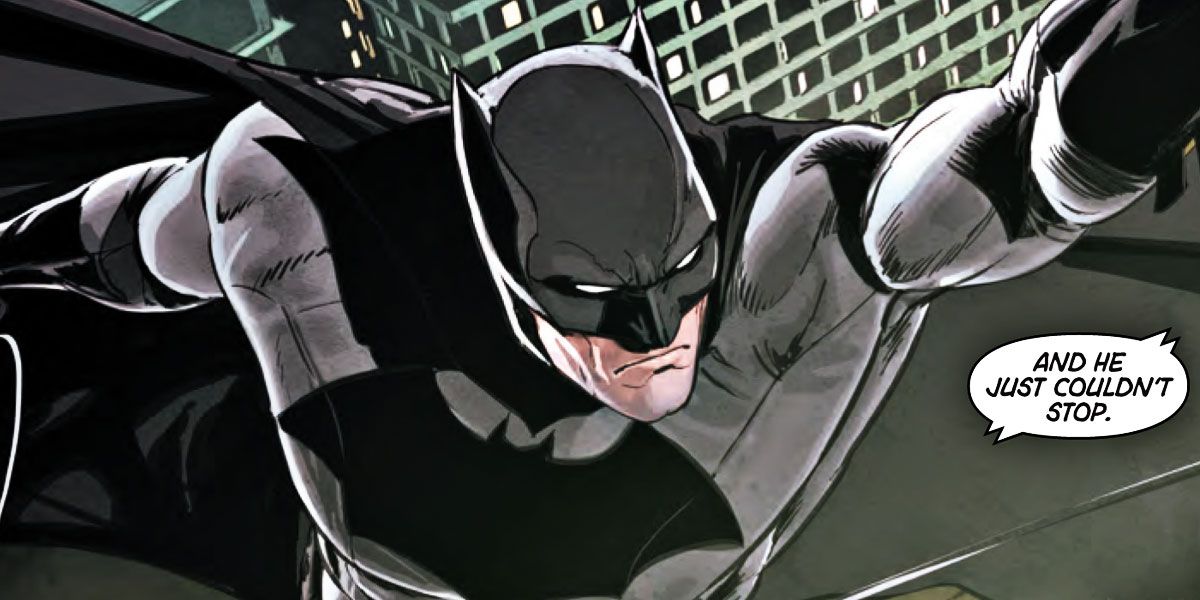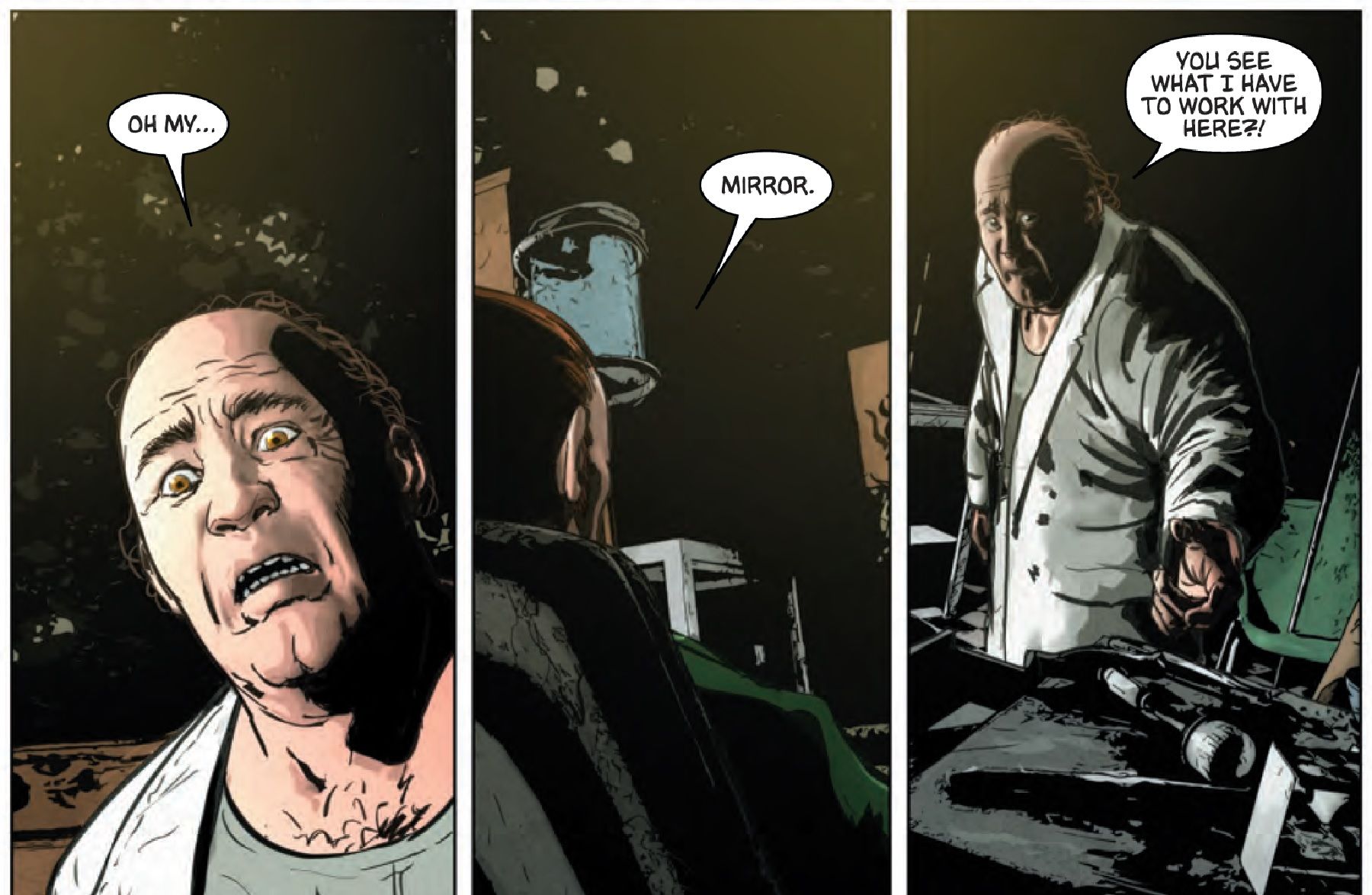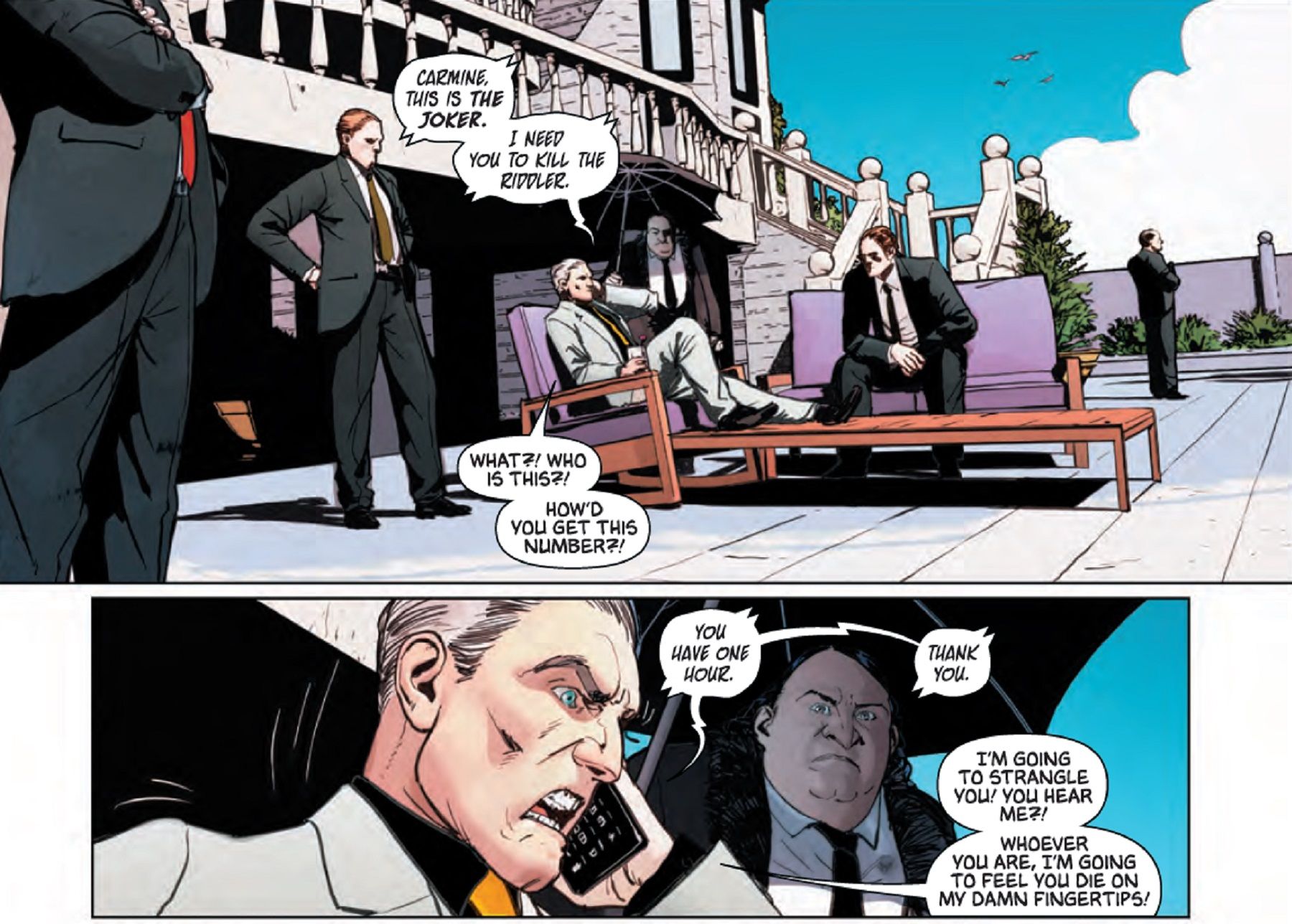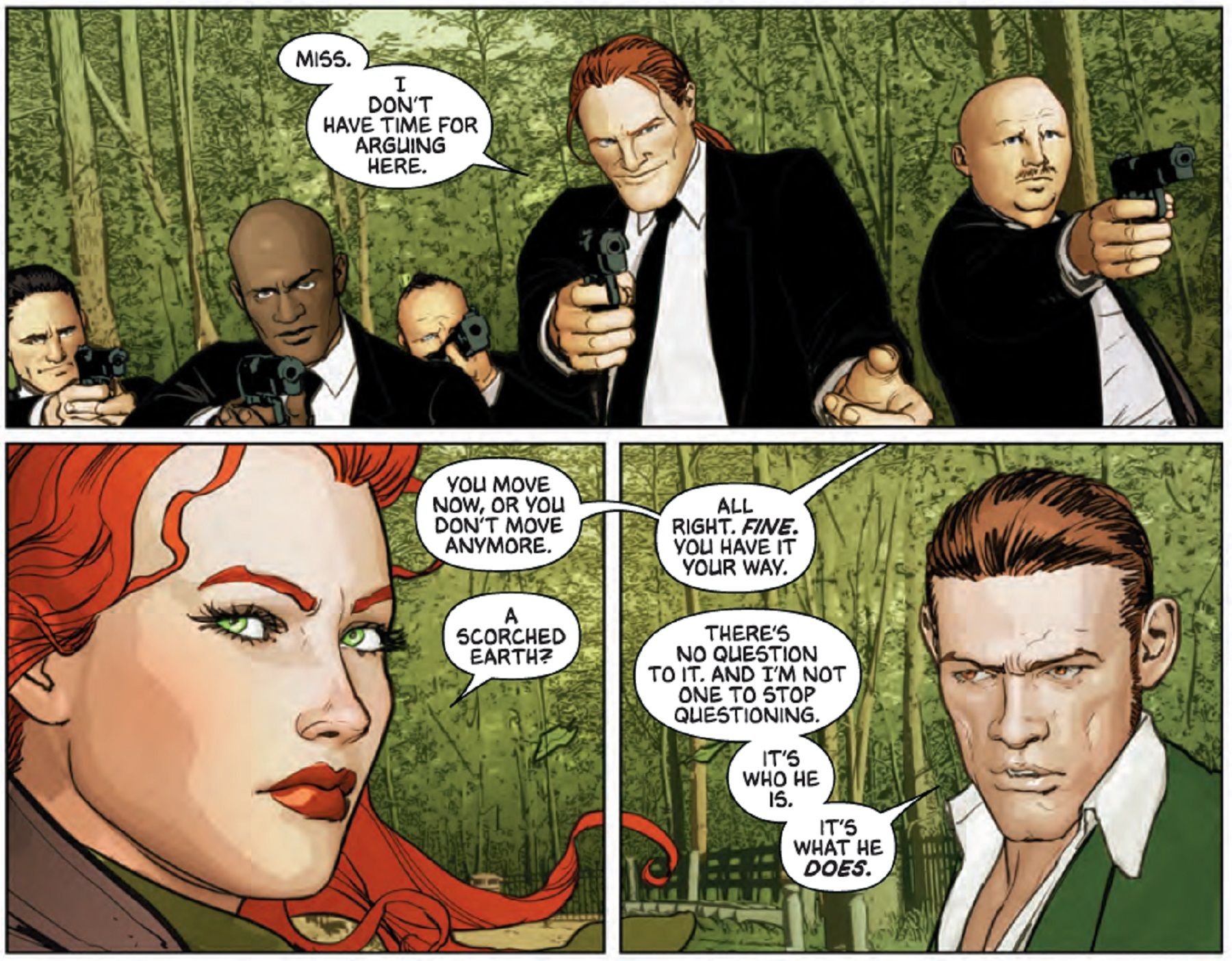SPOILER WARNING: The following article contains major spoilers for Batman #26 by Tom King and Mikel Janín, on sale now.
While the second part of "The War of Jokes and Riddles" centers mainly on the growing dispute between two of Batman's best-known villains, Batman #26 also establishes a tweaked dynamic within the Dark Knight's overall mythos. Like the opening chapter, Tom King and Mikel Janín's story is told in flashback from Bruce Wayne's point of view, to a somewhat discernible time earlier in Batman's career.
RELATED: DC’s Batman/Elmer Fudd Annotated, From Acme to Yosemite Sam
There are indications, however, that the seemingly present-day framing sequence might not be when readers think it is, by way of a subtly cryptic statement by made by Bruce at issue's end. While King and Janina's tale makes a few adjustments to Batman's history, some possible changes to his future are possibly hinted at, as well, all while King and Janín give a nod to some past elements of Bat-history.
He's So Vain – I'll Bet You Think This Scene Is About Him, Don't You?
A wounded Riddler was last seen dragging himself away after being shot point blank in the stomach by The Joker last issue – not surprisingly, he's shown here to have survived the encounter. In a scene deliberately lifted out of Tim Burton's first Batman film, a back-alley doctor is seen in the aftermath of an unsuccessful medical procedure with only crude surgical tools at his disposal. The disgruntled patient undergoing the procedure isn't The Joker, though – instead, it's Ed Nygma, whose life has been saved, but at the cost of a grisly scar on his torso. The inventive Nygma then fittingly carves a question mark on his chest, with his new scar serving as the punctuation point. The doctor meets an even less desirable, but equally permanent, fate.
Unhappy with the mark The Riddler is leaving on Gotham, The Joker orders an immediate hit on Nygma, and orders the hit to be carried out by "Carmine" – presumably, Carmine Falcone. While initially put off by the apparent ease with which The Joker contacted him regarding the hit, he quickly does an about face and orders his henchmen to find and kill The Riddler. This relatively instantaneous alliance points towards a possible alliance between The Joker and Falcone – a relationship that's been relatively non-existent in past Batman history, and one that seemingly puts Falcone in an atypically subservient role to Batman's greatest nemesis.
Who Is That Beaked Man?
In turn, an unnamed but very familiar-looking Batman foe serves as one of Falcone's own henchmen – a goon who, as illustrated by Janín, bears a striking, if slightly more handsome, resemblance to Danny Devito's incarnation of Oswald Cobblepot in Burton's Batman Returns. While unidentified, he's clearly made out to be a pre-Penguin Cobblepot, one who works for Gotham's underworld, with a tweak to comics continuity that puts the character's history in a more modern context, one that's a little more familiar to viewers of FOX's Gotham. After wounding Falcone and killing his onsite henchmen, The Joker himself later declares this "Fatman" as his own personal assistant, possibly portending another new future Joker/Penguin dynamic.
The Riddler himself seems to be forging a relationship of his own with another one of Batman's better-known foes, namely Poison Ivy. Although the relationship seems to be more professional than personal, the colors of their outfits match nicely, and Nygma proudly rocks a new open-chested look, displaying his iconic symbol like a new tattoo. As the two take a stroll through one of Gotham's lushly adorned parks, Falcone's goons arrive to carry out their Joker-ordered hit, but fail miserably as Ivy dispatches the hitmen by turning the park's greenery against them in fatal retaliation.
The Past Is Tweaked – What About Bruce's Future?
All of the above is told in flashback by Bruce himself in a narrative to Selina, just as it was last issue. The intimate setting between Bruce and Selina indicates that, whatever her answer to Bruce's marriage proposal at the end of Batman #25, the two are clearly an item at this point. As the main events of "The War of Jokes and Riddles" – as well as Batman's pre-"Endgame" costume – are filling in blanks from an earlier time in Batman's history -- Year Two, as it were -- the framing sequence occurs occur in present day, immediately or shortly after the previous story arc.
RELATED: REVIEW: Batman #26 Escalates War Of Jokes & Riddles With Nods, Surprises
Citing the innocent victims claimed by The Joker, The Riddler, and their allies during their conflict, Bruce states, more than once, that he "was a superhero." His dejected statement could be interpreted in a context that he failed as a hero, for what he sees as a failure to stop the dozens (or more) of killings stemming from this war between supervillains. In a more literal sense, though, his mention could be a simple statement of fact that at one point in the past he actually hung up the cape and cowl and, for a time, there was no Batman protecting the citizens of Gotham City.
This notion plays into the words of his alternate-reality father spoken to him during "The Button" ("Don't be Batman") and his subsequent and seeming consideration of that idea. It's hinting towards the possibility, then, that he may well be considering retiring from the superheroing world in the wake of his marriage proposal to Selina. Whether this is a decision that will link directly to the events of The Joker and Riddler's long-concluded war or to other factors remains to be unveiled, of course.
Batman #26 postulates many changes both to past Batman history, and to Bruce Wayne's future, that possibly signal a new status quo for the Dark Knight in DC Comics' Rebirth era. More clues to those changes, and possibly other changes entirely, will likely unfold in the next chapter of "The War of Jokes and Riddles" in Batman #27, on sale July 19.




